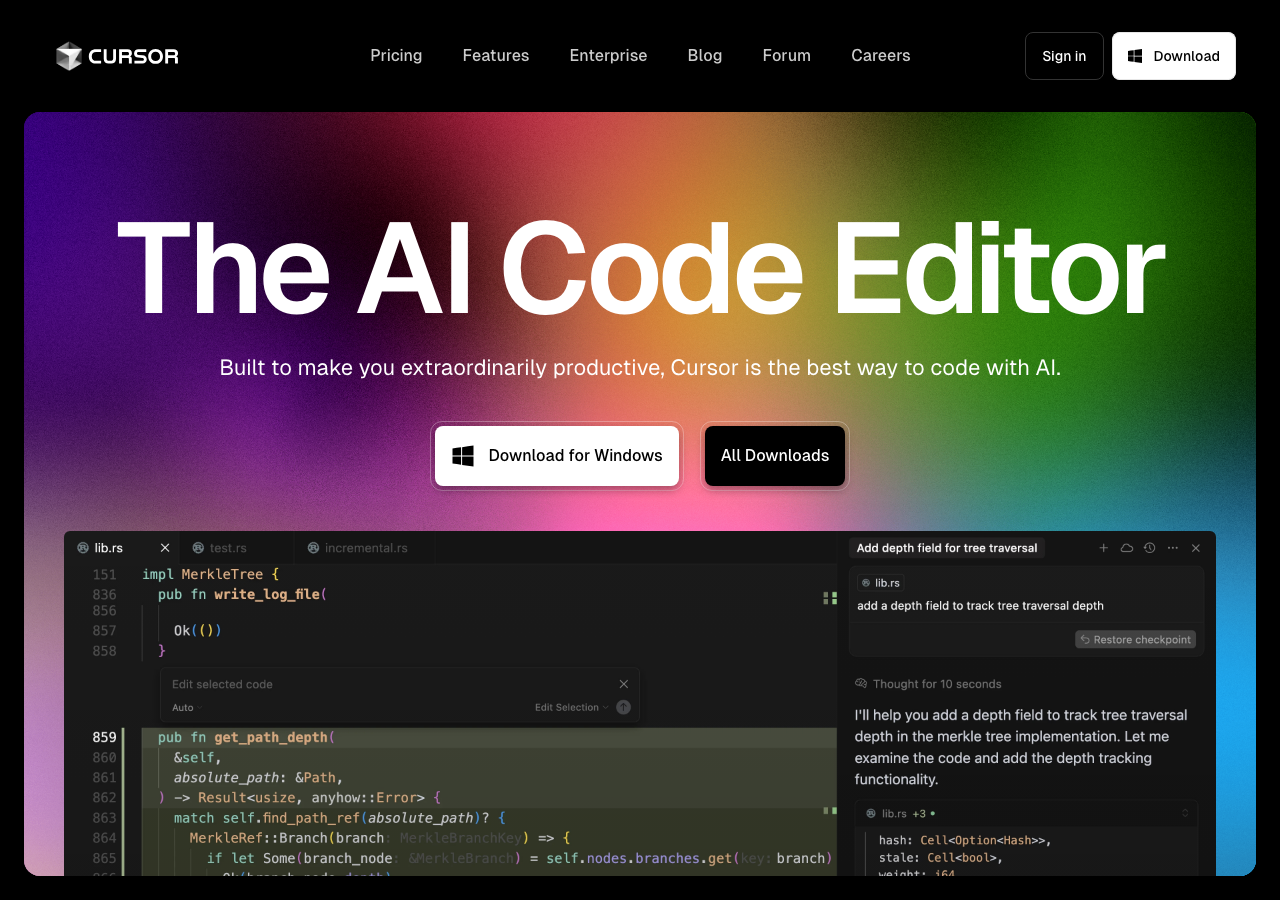A curated list of 1191 AI tools designed to meet the unique challenges and accelerate the workflows of AI Enthusiasts.

Your AI assistant for conversation, research, and productivity—now with apps and advanced voice features.

Bring your ideas to life: create realistic videos from text, images, or video with AI-powered Sora.

Your everyday Google AI assistant for creativity, research, and productivity

Accurate answers, powered by AI.

Open-weight, efficient AI models for advanced reasoning and research.

Generate on-brand AI images from text, sketches, or photos—fast, realistic, and ready for commercial use.

AI workflow automation for technical teams

The world’s most advanced AI code editor

Your cosmic AI guide for real-time discovery and creation

The AI code editor that knows your codebase

Chat, create, and manage AI characters—powerful automation, privacy, and control for everyone.

Your trusted AI collaborator for coding, research, productivity, and enterprise challenges
Spin up a prototype by combining text, image, and audio generation tools into a single demo. Benchmark frontier models against open datasets and visualize trade-offs in latency, cost, and accuracy. Automate experiment logging so you can publish reproducible project write-ups or streams. Use vector databases and RAG tooling to ground experiments with your personal knowledge base.
Flexible pricing that keeps hobby experiments affordable while scaling during hackathons. Access to model customization—prompt engineering, lightweight fine-tuning, or plug-in architectures. Community features such as template sharing, leaderboards, or Discord integrations to gather feedback quickly. Export options that let you publish demos to GitHub, Hugging Face Spaces, or personal websites.
Yes—many vendors offer free tiers or generous trials. Confirm usage limits, export rights, and upgrade triggers so you can scale without hidden costs.
Normalize plans to your usage, including seats, limits, overages, required add-ons, and support tiers. Capture implementation and training costs so your business case reflects the full investment.
Signal vs noise when dozens of tools promise “state-of-the-art”. Shortlist platforms with transparent changelogs, reproducible benchmarks, and open APIs so you can verify claims yourself. Managing compute costs when experimenting with large models. Favor tools that support tiered usage, GPU sharing, or on-demand credits so you never leave experiments running idle. Sharing projects without exposing API keys or private data. Use staging environments and secrets managers. Many enthusiast platforms now sandbox keys or provide temporary demo tokens.
Adopt a weekly experiment cadence. Document what worked, what failed, and what the community responded to. Publish lightweight retros so collaborators can build on your learnings. Treat each proof-of-concept as an asset—tag, archive, and revisit when new models emerge.
Prototype-to-publication cycle time. Community engagement (stars, forks, discussions) on shared experiments. Cost per experiment versus the insights generated. Number of reusable components (prompts, datasets, pipelines) in your personal library.
Treat your experiment log like a changelog. Tag experiments by modality, task, and outcome so you can resurface the right approach when a collaborator asks for guidance.
AI Enthusiasts thrive on experimentation. The right stack lets you validate cutting-edge models, remix open datasets, and showcase prototypes without spinning up heavyweight infrastructure. This collection curates playgrounds, labs, and research sandboxes so you can spend more time building and less time wiring boilerplate.
Model releases move at breakneck pace—missing a single update can make your projects feel dated. AI playgrounds now bundle rapid fine-tuning, multimodal pipelines, and shareable demos. That means you can validate concepts in hours, rally community feedback, and iterate before the next research paper drops.
Use this checklist when evaluating new platforms so every trial aligns with your workflow, governance, and budget realities:
Adopt a weekly experiment cadence. Document what worked, what failed, and what the community responded to. Publish lightweight retros so collaborators can build on your learnings. Treat each proof-of-concept as an asset—tag, archive, and revisit when new models emerge.
Treat your experiment log like a changelog. Tag experiments by modality, task, and outcome so you can resurface the right approach when a collaborator asks for guidance.